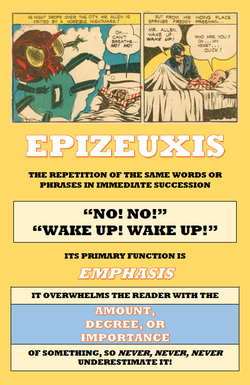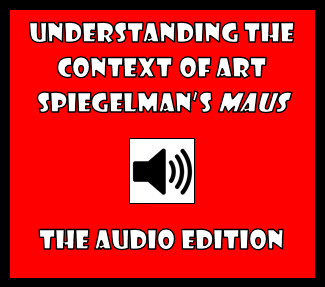Why Teach Comics?
4/2/2014
by Glen Downey, Comics in Education, www.comicsineducation.com Just in case you didn't have reason enough already... In a lecture called "Fostering Inquiry One Comic Book at a Time" that I delivered at the 2014 Reading for the Love of It Conference, I discussed the importance of teaching visual narrative in the K-12 classroom. What I talked about, though, was actually inspired by a pair of articles I wrote for the Sequart Organization at the start of 2013. Here's what I said in "Changing Attitudes to Comics in the Classroom:" In 2010, I assigned a rather curious task to a group of twenty-two graduate students at the Ontario Institute for Studies in Education (OISE) while teaching a course called New Literacies: Making Multiple Meanings. The students included K-12 educators with a range of experiences and backgrounds, as well as those working in education in a non-teaching capacity. The purpose of the activity was to determine what they saw as the basic skills needed to access “new literacies.” Pairs of students were assigned a given literacy, and then came up with a thoughtful analysis of the skills that would be needed for someone to possess, for example, information literacy or health literacy. The following week, just as one might do in a middle school classroom, I had the students fill up a blackboard with the skills they came up with for their given literacy. Then we simply circled the skills that appeared over and over again. The following five were repeated multiple times:
Given that 21st-century students in our K-12 classrooms spend a considerable amount of time immersed in a visual culture outside the classroom, it seems absurd to avoid teaching visual narrative to academic students as they develop the above-mentioned skills. Having students navigate through different genres and across different platforms of learning as they critically think about and make connections between poetry, novels, short fiction, visual narrative, epistolary writing, discussion boards, blogs, and hypertext fiction seems like a no-brainer. Are students’ self-awareness and metacognition really better served by avoiding comics and graphic novels in the academic English classroom? Isn’t visual narrative an ideal starting point in exploring with students both the traditional “print” genres of the novel, short fiction, poetry, and non-fiction, and the world of writing that hypertext and the web has opened up for all of us? If the skills that my students identified are crucial ones for access to the range of 21st-century literacies our students need, and if studying visual narrative helps foster these skills, we would be remiss if we kept comics and graphic novels out of our classrooms. Interestingly enough, the five skills listed above are ones that a certainly category of individuals has developed better than any other, and studying these individuals gives students insight into how to develop the skills themselves. What category would that be you might ask? Comic book superheroes.
0 Comments
Your comment will be posted after it is approved.
Leave a Reply. |
Glen DowneyDr. Glen Downey is an award-winning children's author, educator, and academic from Oakville, Ontario. He works as a children's writer for Rubicon Publishing, a reviewer for PW Comics World, an editor for the Sequart Organization, and serves as the Chair of English and Drama at The York School in Toronto. If you've found this site useful and would like to donate to Comics in Education, we'd really appreciate the support!
Archives
February 2019
|



 RSS Feed
RSS Feed
